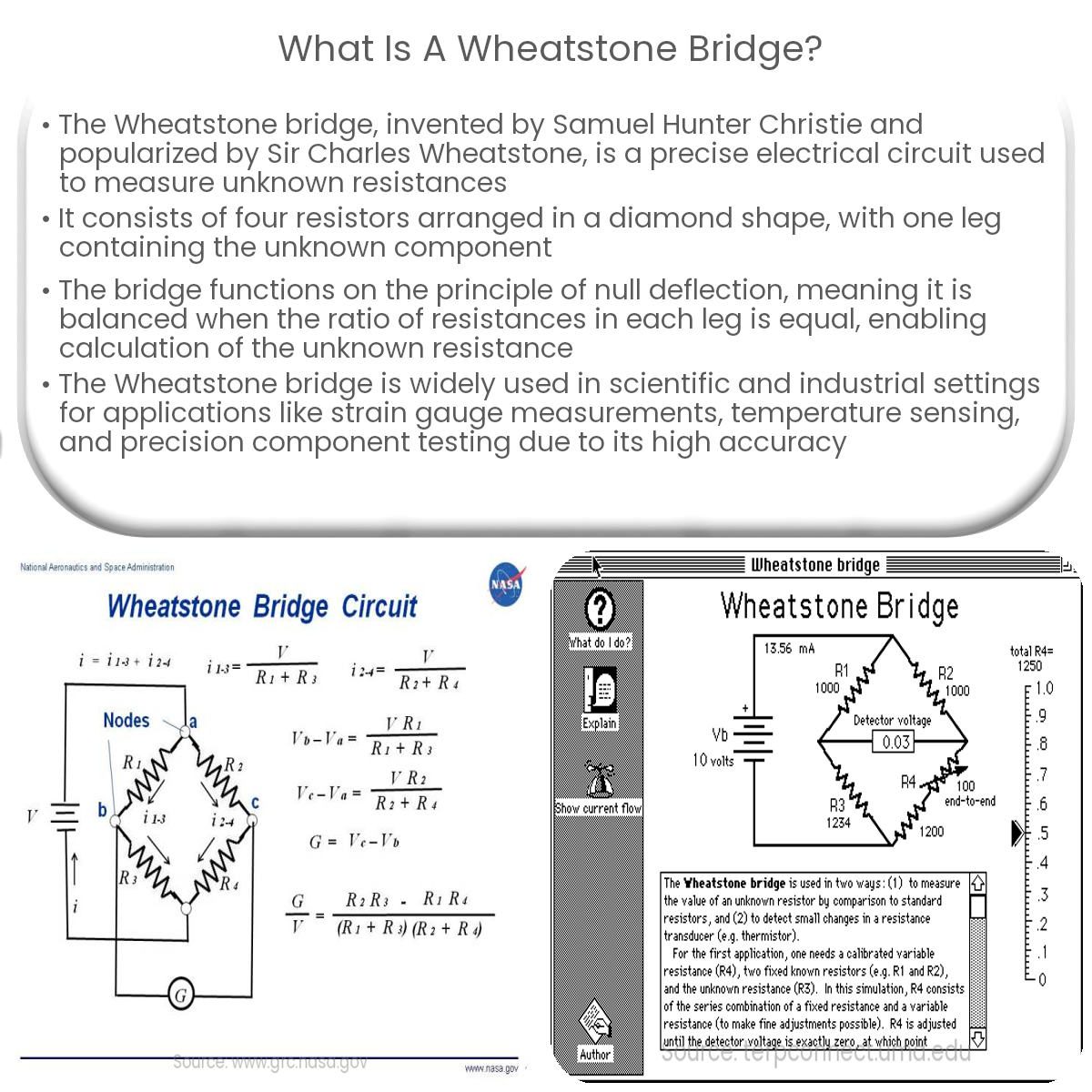A Wheatstone bridge is an instrument used to measure unknown electrical resistance or compare resistances by balancing the bridge’s resistor ratios.
Introduction to Wheatstone Bridge
A Wheatstone bridge is a precise instrument used for measuring unknown electrical resistance or for comparing two resistances in a circuit. Invented by Samuel Hunter Christie in 1833 and later popularized by Sir Charles Wheatstone, this device remains an essential tool in electrical engineering and physics. In this article, we will discuss the Wheatstone bridge and its applications.
Working Principle of Wheatstone Bridge
A Wheatstone bridge consists of four resistors connected in a diamond shape, with a galvanometer connected between the top and bottom nodes. The resistors are typically arranged in two known ratios, and an unknown resistor is placed in the fourth position. A voltage source is connected across the bridge, and the galvanometer measures the potential difference between the top and bottom nodes.
When the bridge is balanced, the ratio of known resistors equals the ratio of the unknown resistor to another known resistor, and the galvanometer reads zero. By adjusting the known resistors, one can determine the unknown resistance using the following equation:
Runknown = R3 × (R1 / R2)
Where R1, R2, and R3 are the known resistors, and Runknown is the unknown resistor.
Applications of Wheatstone Bridge
Wheatstone bridges have a wide range of applications in various fields, including:
- Measurement of unknown resistances: Wheatstone bridges can be used to accurately measure unknown resistances in a circuit, making them valuable tools in laboratories and industry.
- Strain gauges: Wheatstone bridges are commonly used in conjunction with strain gauges to measure mechanical strain or stress in materials and structures.
- Temperature sensors: Wheatstone bridges can be employed with temperature-sensitive resistors, such as RTDs and thermistors, to measure temperature changes with high precision.
- Comparing resistances: Wheatstone bridges allow for the comparison of resistances with high accuracy, making them suitable for calibration purposes.
Conclusion
A Wheatstone bridge is an essential instrument for measuring unknown electrical resistance and comparing resistances with high precision. It operates on the principle of balancing the bridge, where the ratio of known resistors equals the ratio of the unknown resistor to another known resistor. With applications ranging from strain gauge measurements to temperature sensors, Wheatstone bridges remain indispensable tools in electrical engineering and physics.


